Understanding Mosquito IGR: A Comprehensive Guide
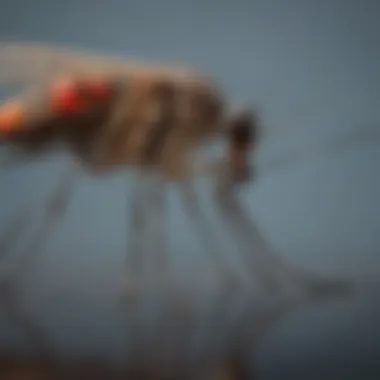
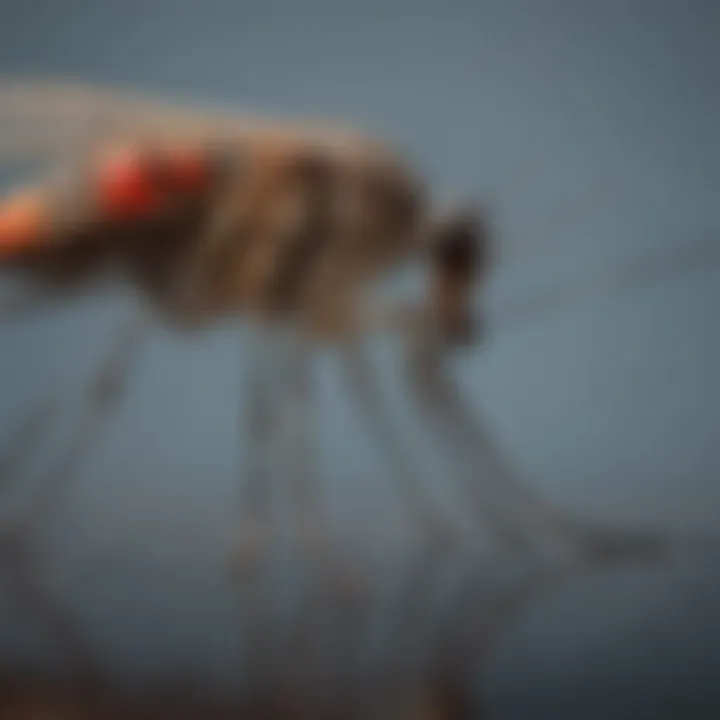
Intro
In the quest for effective mosquito control, understanding the role of Insect Growth Regulators (IGRs) becomes essential. These substances target specific growth processes in insects, offering a promising strategy to manage mosquito populations without resorting to traditional pesticides, which may carry broader ecological risks. This article aims to provide a thorough examination of mosquito IGRs, exploring how they work, their application, and the balance between effectiveness and environmental responsibility.
Understanding Pests
Definition of Pests
Pests, in the simplest terms, are organisms that cause harm or discomfort to humans, plants, or livestock. In particular, mosquitoes are a major pest due to their ability to transmit diseases and disrupt everyday life. Understanding what qualifies something as a pest is key. It involves recognizing their behaviors, habitats, and the potential risks they pose.
Importance of Pest Identification
Identifying the specific type of mosquito is vital for effective control measures. There are several species, like Aedes aegypti and Anopheles gambiae, each with distinct behaviors and breeding patterns. Knowledge about local populations helps in selecting the appropriate strategies for management. This identification process not only enhances control efforts but also minimizes unnecessary treatments.
Prevention Techniques
Home and Garden Preventative Measures
Implementing preventative measures in both home and garden settings can significantly reduce mosquito populations. Here are some effective strategies:
- Eliminate standing water: Mosquitoes breed in water. Remove or cover containers, clean gutters, and fill low areas in the yard.
- Install screens: Use fine mesh screens on windows and doors to keep mosquitoes out of your home.
- Maintain landscaping: Trim bushes and mow lawns regularly to reduce hiding spots for adult mosquitoes.
Seasonal Prevention Tips
Seasonal considerations are crucial for mosquito prevention. During warmer months, it is beneficial to increase monitoring and applying IGRs before populations peak. This proactive approach can safeguard outdoor events and provide a more pleasant environment.
Eco-Friendly Pest Control Solutions
Overview of Sustainable Practices
As concerns about environmental impact grow, there is a shift towards eco-friendly pest control solutions. Sustainable practices focus on long-term effectiveness, targeting mosquito lifecycle stages without harming non-target organisms. IGRs embody this approach, allowing for targeted intervention while maintaining ecological balance.
Natural Remedies and Their Effectiveness
Natural remedies such as citronella, eucalyptus oil, and neem can serve as complementary measures to IGRs. While their effectiveness may vary, they offer the advantage of being less toxic to humans and pets. Incorporating these remedies into an overall pest management strategy can enhance its success.
In summary, understanding mosquito IGRs and their application within an integrated pest management framework provides valuable insights for homeowners seeking sustainable solutions. This exploration sets the stage for a detailed discussion of IGR mechanisms, benefits, and potential limitations in the subsequent sections.
Intro to Insect Growth Regulators
Insect Growth Regulators (IGRs) represent a significant advancement in pest management, particularly for controlling mosquito populations. Understanding IGRs is crucial for both pest management professionals and homeowners aiming to reduce mosquito-related issues. These substances don't kill insects directly; instead, they interfere with their development processes. By altering growth patterns, IGRs help in managing pest populations in a more controlled, sustainable manner.
Definition and Function of IGRs
Insect Growth Regulators are chemicals that mimic natural hormones essential for insect development. They are designed to disrupt vital processes, including growth, reproduction, and metamorphosis. IGRs can be categorized into two main types: chitin synthesis inhibitors and juvenile hormone analogues. Each type works differently yet aims to achieve the common goal of regulating insect populations by preventing them from reaching maturity or reproducing.
The primary functions of IGRs include:
- Inhibiting larval growth and transformation into the adult stage.
- Interrupting mating behaviors and reducing fertility rates.
- Altering the synthesis of chitin, a critical component in the exoskeleton of insects.
By focusing on these developmental processes, IGRs provide long-term control of mosquito populations without the toxic effects of conventional insecticides. This mechanism of action promotes a more environmentally friendly approach to pest management.
Historical Context of IGR Development
The development of Insect Growth Regulators began in the late 20th century as scientists sought effective ways to combat pest infestations without harming non-target species. The recognition that insects rely on hormonal signals for development led to the exploration of synthetic compounds that could mimic or disrupt these signals. Early research focused on juvenile hormones, which regulate the transition from larval to adult states in insects.
The first commercial IGR was introduced in the 1970s, marking a shift in pest control strategies. As research progressed, various formulations emerged, targeting specific species such as mosquitoes, flies, and agricultural pests. This evolution in pest management underscores the importance of IGRs in modern pest control, reflecting shifting attitudes towards safer and more sustainable practices. The continuous refinement of these agents speaks to their efficacy and importance in managing mosquito populations effectively.
The Biology of Mosquitoes
Understanding the biology of mosquitoes is essential in the context of Insect Growth Regulators (IGRs). This section outlines the life cycle stages and reproductive habits, both of which are crucial for designing effective pest management strategies. By comprehending their biology, one can tailor IGR applications more efficiently and sustainably, therefore reducing mosquito populations while minimizing impacts on the environment.
Life Cycle Stages of Mosquitoes
The life cycle of mosquitoes includes several distinct stages: eggs, larvae, pupae, and adults. Each stage has unique characteristics and contributes differently to the overall mosquito population dynamics.
Eggs
Mosquito eggs are the starting point in their life cycle. They are often laid in stagnant water, adhering to surfaces like leaves or floating debris. A key characteristic of mosquito eggs is that they can withstand desiccation, allowing them to survive in dry conditions for extended periods. This resilience makes them a significant concern for pest management, as they can remain dormant and hatch when conditions become favorable. For this article, understanding the egg stage is beneficial because it forms the foundation of the mosquito population.
One unique feature of mosquito eggs is their varied grouping behavior; some species lay eggs in clusters, while others do so individually. This affects control strategies since targeting eggs can significantly impact future generations. Effective IGR application targeting eggs can disrupt their life cycle early, ultimately leading to reduced adult populations.
Larvae
Mosquito larvae are aquatic and undergo several molts before reaching the pupal stage. A defining characteristic of larvae is their filter-feeding behavior, consuming microorganisms and organic matter present in water. This stage is crucial as it is the first point where IGRs can be effectively applied. In terms of mosquito control, targeting larvae can prevent their development into adults, which are the primary vectors for disease.
The ability of larvae to thrive in various water environments, from clean to polluted, presents both challenges and opportunities. IGRs can be delivered into these environments, ensuring that larvae are affected before they can mature. Thus, addressing the larval stage is critical in integrated pest management strategies focusing on reducing mosquito populations.
Pupae
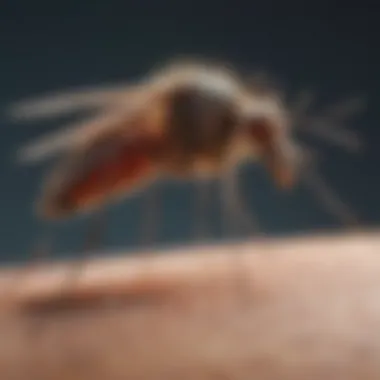
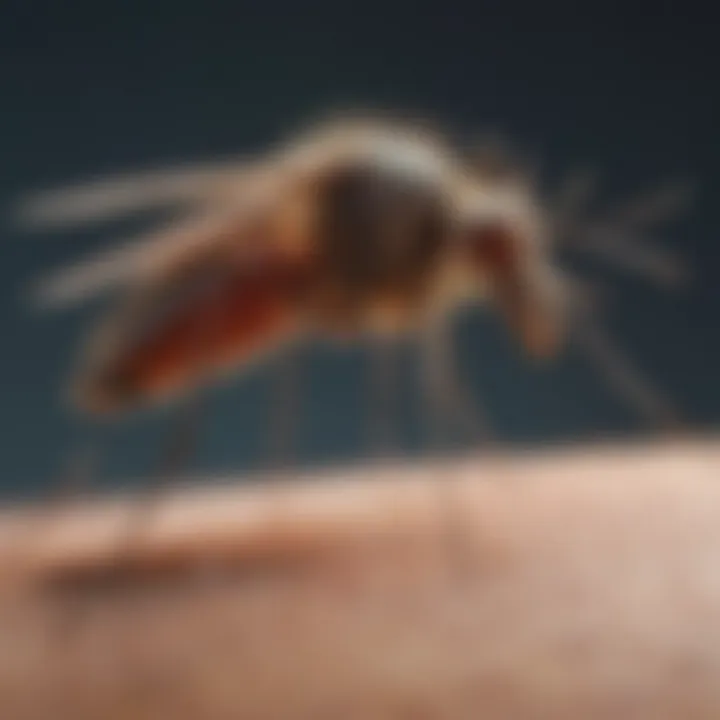
Pupae are non-feeding and represent a transitional stage where mosquitoes undergo metamorphosis. This stage is characterized by a distinct body shape, allowing them to float at the water's surface. The unique feature of pupae is that they are mobile compared to larvae; they can swim away if disturbed. This mobility complicates control efforts because traditional measures may not be effective.
Despite being resistant to many chemical controls, IGRs can still be effective against pupae. Their role in the life cycle makes it essential to consider them when strategizing pest management approaches. By targeting this stage, it is possible to decrease the number of adults that emerge, thus lowering the overall mosquito population.
Adults
Adult mosquitoes are the final stage of their life cycle and are often the most recognized due to their presence as nuisances and vectors of diseases. A vital characteristic of adults is their feeding behavior; female mosquitoes require blood for their reproductive process, making them significant in disease propagation. In the context of mosquito IGRs, targeting adult mosquitoes can be less effective compared to earlier life stages.
Adult mosquitoes possess a remarkable ability to evade control measures, primarily due to their mobility and dispersive nature. While IGRs are not typically used directly against adults, understanding their behaviors can influence the timing and method of application for other control strategies.
Reproductive Habits and Challenges
Mosquitoes have specific reproductive habits, with females capable of laying hundreds of eggs at a time. This high reproductive rate poses significant challenges in controlling their populations. Understanding these habits is critical for integrating IGRs in a structured pest management plan.
Factors such as environmental conditions and available resources can affect their reproduction. For example, stagnant water sources are favorable for mosquito breeding. Management strategies should consider eliminating standing water or employing IGRs that target eggs and larvae effectively.
Mechanism of Action of IGRs
The mechanism of action of Insect Growth Regulators (IGRs) is central to their effectiveness in controlling mosquito populations. Understanding how IGRs interact with the biological processes of mosquitoes provides insight into their role in sustainable pest management. These compounds do not kill mosquitoes outright but disrupt their development, thereby reducing numbers over time. This method aligns with responsible pest control practices and addresses growing concerns regarding chemical pesticide resistance.
Chemical Composition of IGRs
The chemical composition of IGRs varies based on their functions. IGRs can be synthesized from natural sources or created artificially through chemical processes. Chitin synthesis inhibitors, for example, target the production of chitin, a vital component of insect exoskeletons. Conversely, juvenile hormone analogues mimic the hormone that regulates development, interfering with normal growth patterns. By understanding these compositions, one can appreciate how they specifically target the developmental stages of mosquitoes without affecting other organisms significantly.
Targeting the Mosquito Developmental Processes
Ecdysis
Ecdysis, the process of shedding the exoskeleton, is pivotal in mosquito development. IGRs aiming at ecdysis interrupt the hormonal signals that trigger this essential process. By doing this, they hinder a mosquito's ability to grow and progress through its life stages. The unique characteristic of ecdysis-targeting IGRs lies in their precision. They only affect mosquitoes, making them a beneficial choice for mosquito control strategies. The advantage is clear: targeting ecdysis reduces the chances of adult mosquito emergence, directly addressing pest populations.
Metamorphosis
The metamorphosis of mosquitoes involves significant changes as they transition from larvae to pupae and then to adults. IGRs that influence metamorphosis aim to disrupt this natural progression. A key characteristic of these regulators is that they manipulate the developmental hormones that regulate these transformations. This method is popular because it prevents mosquitoes from reaching their reproductive adult stages. However, the challenge lies in the timing and environmental conditions, as effectiveness may vary based on these factors. The unique feature here is the potential for long-term population control through effective metamorphosis disruption.
Growth Regulation
Growth regulation is another critical aspect of how IGRs operate. These compounds effectively manage overall insect growth, ensuring that mosquitoes do not reach maturity. The key characteristic of growth regulation is its dual role: it not only affects growth rates but also impacts the nutritional absorption of developing mosquitoes. This makes it a beneficial choice in integrated pest management, as it can be combined with other control strategies. Nevertheless, one must consider possible side effects on non-target species. IGRs that focus on growth regulation may lead to unintended ecological consequences if not applied judiciously.
Types of Mosquito IGRs
Understanding the types of mosquito Insect Growth Regulators (IGRs) is essential for effective pest management strategies. By recognizing how different IGRs function, homeowners can make informed decisions about their use, leading to more sustainable practices in controlling mosquito populations. Two primary classes of mosquito IGRs are Chitin Synthesis Inhibitors and Juvenile Hormone Analogues. Each type has distinct mechanisms and applications that can help mitigate mosquito nuisance without harming other beneficial insects.
Chitin Synthesis Inhibitors
Chitin Synthesis Inhibitors (CSIs) play a crucial role in disrupting the normal development of mosquitoes by targeting the production of chitin, a key component of exoskeletons in insects. Without proper chitin formation, mosquito larvae and pupae struggle to progress through their life stages effectively. CSIs impact the molting process, leading to developmental abnormalities or death during these critical phases. This makes them highly effective as a preventive measure in controlling mosquito populations, especially in water bodies where larvae thrive.
The effectiveness of CSIs can depend on various factors such as concentration and environmental conditions. When applied correctly, they can provide a prolonged action against mosquito larvae, thereby reducing reliance on chemical pesticides. Furthermore, these inhibitors generally present lower toxicity risks to non-target fauna, making them a more environmentally friendly option.
Juvenile Hormone Analogues
Juvenile Hormone Analogues (JHAs) mimic the natural juvenile hormones that control insect development. These analogues interfere with the hormonal processes essential for growth and metamorphosis in mosquitoes. They prevent larvae from maturing into adults by causing them to remain in a juvenile state, which significantly reduces the adult mosquito population over time.
JHAs can serve as an effective means of population control, particularly because they target specific life stages. Such specificity minimizes adverse effects on other beneficial insects and non-target species. This aspect makes them a suitable choice for integration with other pest control measures, promoting comprehensive ecological health.
In summary, understanding and utilizing Chitin Synthesis Inhibitors and Juvenile Hormone Analogues allows homeowners to adopt effective and sustainable methods for mosquito control. By thoughtfully applying these IGRs, it is possible to strike a balance between managing mosquito populations and preserving the surrounding ecosystem.
Application Methods for Mosquito IGRs
Understanding how to effectively apply Mosquito IGRs is crucial for maximizing their benefits while minimizing any potential downsides. Application methods can significantly influence the product's effectiveness and the overall success of mosquito management strategies. Choosing the right method ensures that the IGRs are delivered where they are needed most, targeting mosquito life stages effectively while being safe for non-target organisms.
Proper application not only enhances the efficacy of the treatment but also ensures that resources are used efficiently. When homeowners and pest management professionals approach mosquito control with the right knowledge about application, they can better monitor and adapt their strategies over time, leading to improved outcomes.
Sprays and Aerosols
Sprays and aerosols are among the most common application methods for IGRs. These formulations allow for targeted delivery of the active ingredients into environments where mosquitoes breed and develop. The formulation can vary, with some designed for outdoor use while others are formulated for indoor application.
Using sprays ensures an even distribution of the product, reaching areas that may be difficult to target with other methods. Key benefits include:
- Immediate coverage: Spraying provides a quick solution for treating large areas.
- Flexible use: Both indoor and outdoor areas can be treated.
- Adaptable formulation: Sprays can be mixed with other control agents if needed.
However, it is essential to follow the manufacturer's instructions closely, as improper spraying can lead to ineffective treatment or environmental harm. Additionally, weather conditions can impact spray effectiveness, as rain can wash away active ingredients, making timely application important.
Granules and Pellets
Granules and pellets offer another efficient means to apply Mosquito IGRs, particularly in areas where water accumulates, such as ponds or slow-moving water. These formulations can be spread evenly over the ground or applied in specific locations where mosquitoes are known to breed.
The advantages of granules and pellets include:
- Controlled release: These formulations work over an extended period.
- Reduced labor: Once applied, they require less frequent treatment than sprays.
- Targeted application: They can be utilized in localized areas crucial for mosquito breeding.
Considerations do exist with granular applications, including the need to ensure they remain in place, especially during heavy rain. Failure to maintain their location may reduce their effectiveness in controlling mosquito populations.
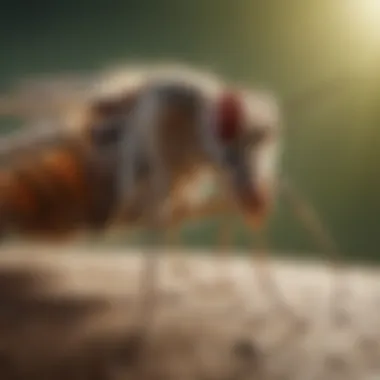
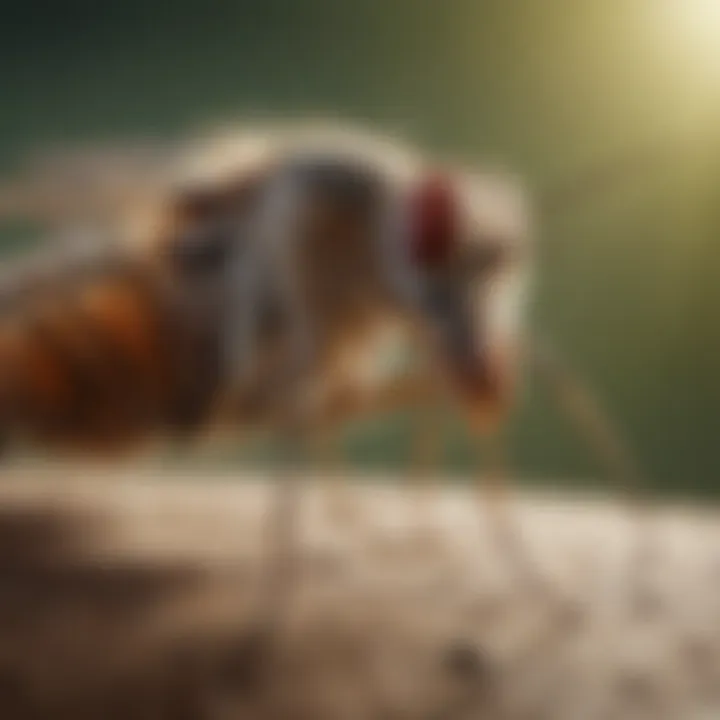
Water Treatments
Water treatments are specialized applications aimed directly at the water sources where mosquitoes lay their eggs. IGRs in this form target the aquatic stages of mosquito development, effectively interrupting their life cycle. This method is particularly effective for species that breed in standing water.
Benefits associated with water treatments are significant:
- Direct targeting: Directly affects larvae and pupae, which significantly reduces their population.
- Sustained results: Many formulations are designed to release gradually, prolonging their effectiveness.
- Less environmental disruption: Minimizes the need for broad-spectrum insecticides that can harm other wildlife.
Water treatments require careful consideration of local ecology and proper application to avoid unintended consequences on other aquatic organisms. Only approved IGRs should be used for these applications to ensure safety and compliance with regulations.
"Effective mosquito management is a combination of the right products and the most suitable application method."
By utilizing sprays and aerosols, granules and pellets, and water treatments, pest control efforts can become more streamlined and effective. This not only protects the immediate environment but also supports sustainable mosquito management practices.
Effectiveness of Mosquito IGRs
The effectiveness of insect growth regulators (IGRs) in controlling mosquito populations is a crucial aspect of integrated pest management. Understanding how these substances work enables homeowners and pest management professionals to make informed decisions regarding their use. IGRs tackle mosquitoes at various life cycle stages, aiming to reduce their population over time by disrupting key biological processes.
Comparative Studies
Several comparative studies have been conducted to assess the effectiveness of different IGRs against mosquito populations. Research indicates that the performance of IGRs can vary significantly based on several factors, including the specific mosquito species targeted, environmental conditions, and the application method used.
In one study, the impact of chitin synthesis inhibitors was compared to juvenile hormone analogues. The results showed that chitin synthesis inhibitors consistently reduced larval survival more effectively when applied in water treatments. In contrast, juvenile hormone analogues performed better when used as granules within the habitat.
This information is essential for homeowners as it illustrates the importance of selecting the right IGR type for their specific mosquito control needs. Additionally, understanding the comparative effectiveness of these products guides users in choosing the most suitable options for their environment and ensures efficient pest management practices.
Duration of Action
The duration of action of mosquito IGRs is another pivotal factor when considering their effectiveness. The longevity of their impact can influence the frequency of application needed and the overall management strategy. Generally, IGRs are designed to provide a prolonged effect, which is favorable for controlling mosquito populations.
For instance, certain formulations, like the aqueous solutions, may remain effective in water environments for up to several weeks. In contrast, granule-based formulations can last longer when applied to soil, as they slowly release the active ingredient.
Key Insight: The effectiveness of IGRs relies not only on their immediate impact but also on their ability to provide sustained control over time.
Homeowners should consider the duration of action when selecting IGRs, as this can help minimize the number of applications required and reduce labor. Choosing an IGR with an appropriate duration can lead to more substantial and lasting results, aligning with sustainable mosquito management practices.
Advantages of Using IGRs in Mosquito Control
The application of Insect Growth Regulators (IGRs) in mosquito control presents multiple advantages that merit careful examination. Understanding these benefits is crucial for homeowners and pest management professionals alike, as they seek effective and sustainable solutions to combat mosquito populations. This section will delve into the specific elements that contribute to the significance of using IGRs.
Target Selectivity
One of the primary advantages of IGRs is their exceptional target selectivity. Unlike broad-spectrum insecticides, IGRs are designed to disrupt the growth and developmental processes of specific insects, particularly mosquitoes. This selectivity is especially important in residential areas, where non-target organisms, such as beneficial insects, must be preserved.
IGRs mainly affect mosquitoes at the larval and pupal stages. Because they do not significantly impact adult insects or species outside the target group, they allow for the maintenance of a balanced ecosystem. This targeted action helps reduce mosquito populations without harming other forms of wildlife.
Reduced Toxicity to Non-Target Organisms
Another salient aspect of IGRs is their reduced toxicity to non-target organisms. Many conventional insecticides can pose risks to humans, pets, and beneficial insects such as bees and butterflies. In contrast, due to their specific action on mosquito physiology, IGRs have a lower potential for negative collateral effects.
For example, the chitin synthesis inhibitors act primarily on organisms that possess chitinous exoskeletons, effectively limiting their impact on mammals and birds. This reduced toxicity aligns with contemporary trends towards safer pest control practices, making IGRs a preferred choice in urban settings where chemical exposure is a significant concern.
Integration with Other Pest Control Methods
IGRs facilitate integration with other pest control methods, amplifying their effectiveness. They can be used in combination with other measures, such as habitat modification, biological control, and even traditional insecticides, to create a comprehensive pest management strategy.
This integrative approach enhances overall control efficacy through methods like:
- Stunting mosquito populations at various life stages
- Reducing the likelihood of developing resistance by mixing treatment methods
- Allowing for a more sustainable impact on areas with ongoing mosquito breeding challenges
By employing IGRs alongside other strategies, homeowners can achieve a more comprehensive solution to mosquito control. This synergy contributes to long-term pest management, reducing the likelihood of infestations in the future.
Overall, the advantages of using IGRs in mosquito control cannot be understated as they support not only direct mosquito management efforts but also the health of our ecosystems.
Potential Drawbacks of IGR Use
Understanding the potential drawbacks of using Insect Growth Regulators (IGRs) in mosquito control is crucial for effective pest management. While IGRs present a range of benefits, addressing their limitations allows for a more balanced approach. Evaluating resistance development and ecological impacts is essential.
Resistance Development
Resistance development in mosquitoes poses a significant challenge to the long-term effectiveness of IGRs. Over time, populations of mosquitoes can evolve, rendering these growth regulators less effective. This issue results from the selective pressure applied by the consistent use of IGRs, which can lead to a scenario where only the resistant individuals reproduce. This carries the risk of escalating mosquito populations, undermining the original intent of using IGRs for control.
Preventing resistance involves strategies such as rotating different classes of insecticides or integrating IGRs with other control methods to minimize reliance on one specific approach. Regular monitoring of mosquito populations can also help. If an increase in resistance is observed, pest management strategies may need to be adapted accordingly.
Ecological Impact Considerations
Using IGRs does not come without ecological considerations. These substances, while targeted towards mosquitoes, may inadvertently affect non-target species. For instance, aquatic organisms could be impacted during water treatments, where IGRs are applied in breeding habitats. Consequently, it is vital to evaluate the broader ecological implications of their use.
Research is needed to understand potential risks to beneficial insects and other wildlife. Stakeholders involved in mosquito control should prioritize methods that mitigate ecological impact while still being effective in targeted mosquito management.
"A thorough understanding of both benefits and drawbacks will inform strategy, ensuring sustainable practices in mosquito control."
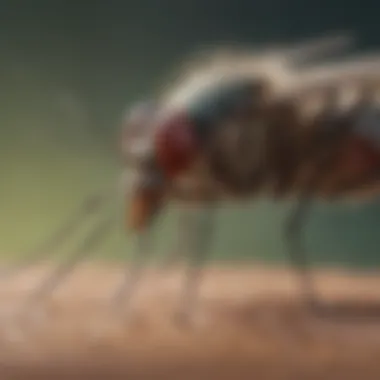
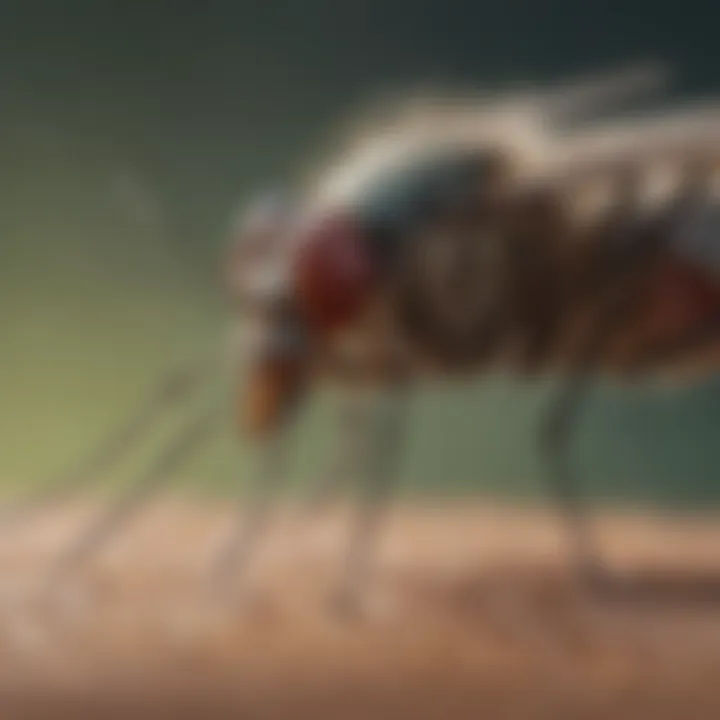
Implementing practices that minimize harm to non-target organisms can contribute to a more sustainable approach to using IGRs. A comprehensive risk assessment should precede the application of any mosquito IGR, considering both ecological and operational aspects.
Regulatory Perspective
The regulatory perspective on Insect Growth Regulators (IGRs) for mosquito control is crucial in ensuring that these substances are used safely and effectively. Regulators oversee the development and approval of IGR products, aiming to balance pest management needs with public health and environmental considerations. This section explores the approval process for IGRs and the safety standards that govern their usage.
Approval Process for IGRs
The approval process for IGRs involves several steps, governed by agencies such as the Environmental Protection Agency (EPA) in the United States. Initially, manufacturers must conduct extensive research to demonstrate the efficacy and safety of their product.
- Data Submission: Interested companies submit data that includes toxicological profiles and ecological impact assessments.
- Assessment by Regulators: This data undergoes scrutiny by regulatory scientists to evaluate risks to human health and the environment.
- Labeling Requirements: If a product is approved, it must meet specific labeling requirements, ensuring consumers understand how to use it safely.
- Periodic Review: Once on the market, products are subject to periodic reviews to update safety profiles or efficacy data.
This rigorous process helps ensure that IGRs in use are responsible choices for managing mosquito populations.
Safety Standards and Guidelines
Safety standards and guidelines form the backbone of IGR regulation. Agencies establish these to protect users, bystanders, and non-target species. Key aspects include:
- Exposure Limits: Regulations define exposure limits for both humans and animals during and after application.
- Environmental Impact Assessments: IGRs often undergo studies to assess their impact on beneficial insect populations and broader ecosystems.
- Emergency Protocols: Guidelines also outline what to do in case of accidental overexposure or environmental spillage.
Ensuring the safety of IGRs relies not only on initial testing but continuous monitoring and public feedback.
By understanding the regulatory landscape, homeowners can make informed decisions about using mosquito IGRs, knowing they are considering options that prioritize safety and efficacy.
Sustainable Mosquito Management Strategies
Sustainable mosquito management strategies are crucial in addressing the ongoing challenges posed by mosquitoes. With the rise in mosquito-borne diseases and the limitations of traditional pest control methods, there is a pressing need for innovative, environmentally friendly approaches. Sustainable strategies emphasize prevention, community involvement, and the responsible use of Insect Growth Regulators (IGRs). This holistic perspective not only helps in managing mosquito populations but also considers the ecological impact.
One of the significant benefits of sustainable mosquito management is the reduction in chemical usage. Relying solely on insecticides can lead to resistance, diminishing effectiveness over time. By integrating IGRs, the focus shifts towards disrupting the developmental processes of the mosquitoes without relying heavily on toxic substances. This methodology aligns with broader environmental goals, safeguarding non-target species and reducing adverse effects on ecosystems.
Integrating IGRs in a Holistic Approach
Incorporating IGRs within a comprehensive mosquito management plan is essential. It involves understanding the life cycle of mosquitoes and identifying key intervention points. For example, deploying IGRs at the larval stage can drastically decrease adult populations over time. This approach requires collaboration among various stakeholders, including local governments, pest management professionals, and residential communities. Integrating IGRs can also involve community education on best practices, such as eliminating standing water and maintaining proper drainage systems.
The successful implementation of IGRs should not come in isolation but as part of an integrated pest management system. This system combines monitoring, biological control, and public awareness. For instance, periodic assessments can help monitor the efficacy of IGRs while simultaneously identifying emerging resistance patterns. By fostering an interconnected strategy that prioritizes environmental health and community participation, mosquito control can become sustainable and effective.
Community Involvement and Awareness Programs
Community engagement plays a significant role in the success of sustainable mosquito management strategies. Awareness programs are imperative in educating residents about the significance of their involvement. Mosquito control is not solely the responsibility of local authorities; it requires active participation from citizens. Programs can inform homeowners about the importance of regular maintenance of yards, reducing clutter, and ensuring proper water drainage.
Public awareness directly influences the overall success of mosquito management strategies. A community that understands the life cycle of mosquitoes and how to disrupt it becomes empowered to take action. This includes educating neighborhoods on the effective use of IGRs and other preventive measures.
Furthermore, community initiatives can include workshops, cleanup drives, and collaborative efforts with schools. These efforts promote a collective responsibility towards maintaining a mosquito-free environment. Educational campaigns can utilize platforms such as social media, information sessions, and local events, fostering a sense of ownership among residents.
Ultimately, a well-informed community can significantly contribute to the sustainability of mosquito management strategies. By building a partnership between community members and pest management professionals, the overarching aim of controlling mosquito populations can be achieved more effectively.
Future Directions in IGR Research
Research into Insect Growth Regulators (IGRs) focused on mosquitoes is evolving rapidly. As the challenges of mosquito control intensify due to environmental changes and the emergence of resistance, innovative approaches are critically needed. Future directions in this research field not only promise to enhance the efficacy of IGRs but also aim to reduce ecological impact. Key considerations include technological advancements, species-specific developments, and integrated management practices.
Emerging Technologies and Innovations
The introduction of new technologies is shaping the landscape of IGR research. One of the most notable advancements is the use of genetic engineering. For instance, CRISPR technology allows for precise manipulation of genes within the mosquito population, potentially leading to the disruption of reproduction or growth patterns. This could complement existing IGR strategies and enhance their effectiveness.
Another area of innovation involves the development of smart delivery systems. These systems can target mosquito habitats more accurately, ensuring the release of IGRs is efficient and minimizes waste. Moreover, nano-technology offers solutions for more effective delivery methods, which enhance the bioavailability of IGRs.
Emerging molecular techniques are also paving the way for studying the mosquito genome. Understanding genetic variations among different species can lead to tailored IGR solutions that target specific developmental pathways, thus improving the potential for success in mosquito management.
Potential Species-Specific IGR Developments
With the growing recognition of the diversity among mosquito species, species-specific IGRs are gaining attention. Research indicates that different species may react uniquely to various IGR formulations. Thus, developing tailored IGRs for species such as Aedes aegypti or Anopheles gambiae presents a promising avenue for increasing effectiveness.
Creating species-specific IGRs involves detailed study of the biological differences among species. Understanding how each species interacts with IGRs can lead to improved efficacy while reducing the risk of resistance development.
Efforts are underway to identify novel targets in the developmental pathways of these mosquitoes. For example, substances that interfere with chitin synthesis could be adapted specifically for Aedes, which may not be as affected by general IGRs. This targeted approach could significantly enhance control measures, aligning with the overall goals of sustainable pest management.
According to recent studies, utilizing such specific strategies can lead to a diminished environmental impact by ensuring non-target species are minimally affected and the ecological balance remains intact.
"The future of IGR research lies not just in the chemicals themselves, but in how we target mosquito populations with precision and efficiency."
Closure
The conclusion serves as a vital component of this article by synthesizing the previously discussed elements surrounding insect growth regulators (IGRs) for mosquitoes. This section not only emphasizes the key findings but also reiterates their significance in the broader context of pest management strategies. Understanding the effectiveness and challenges associated with IGRs can prompt informed decision-making among homeowners and pest management professionals.
Summation of Key Findings
In brief, several essential points emerge from our exploration of mosquito IGRs:
- Mechanistic Insights: IGRs operate by disrupting the hormonal controls necessary for mosquito growth and development. This interference hinders stages like metamorphosis, proving crucial for controlling mosquito populations.
- Application Methods: Various application techniques, including sprays, granules, and water treatments, highlight flexibility and efficacy in implementing IGRs in diverse settings.
- Sustainability and Advantages: IGRs present a compelling case for integration into existing pest control measures. Their selectivity often means reduced impact on non-target organisms, making them a more environmentally friendly option.
- Drawbacks: While IGRs have significant benefits, potential resistance development and ecological impacts warrant careful consideration in their usage.
- Regulatory Framework: Understanding how IGRs are regulated helps inform safe and effective integration into pest management protocols.
These findings facilitate a clearer view of IGRs, underscoring their relevance not just in controlling mosquito populations, but also in promoting sustainable practices in pest management.
Call for Continued Research and Adaptation
The dynamic nature of pest management calls for ongoing research into mosquito IGRs. Continuous improvement and adaptation are essential to advance efficacy and efficiency. Future research should focus on the following:
- Exploration of New Formulations: Developing new IGR formulations that minimize resistance and target specific mosquito life stages could prove more effective.
- Impact Assessment: Detailed studies on ecological impacts will help to understand long-term sustainability when utilizing IGRs.
- Community Education: Fostering awareness about IGRs among homeowners can lead to better adoption and understanding of integrated pest management practices.



